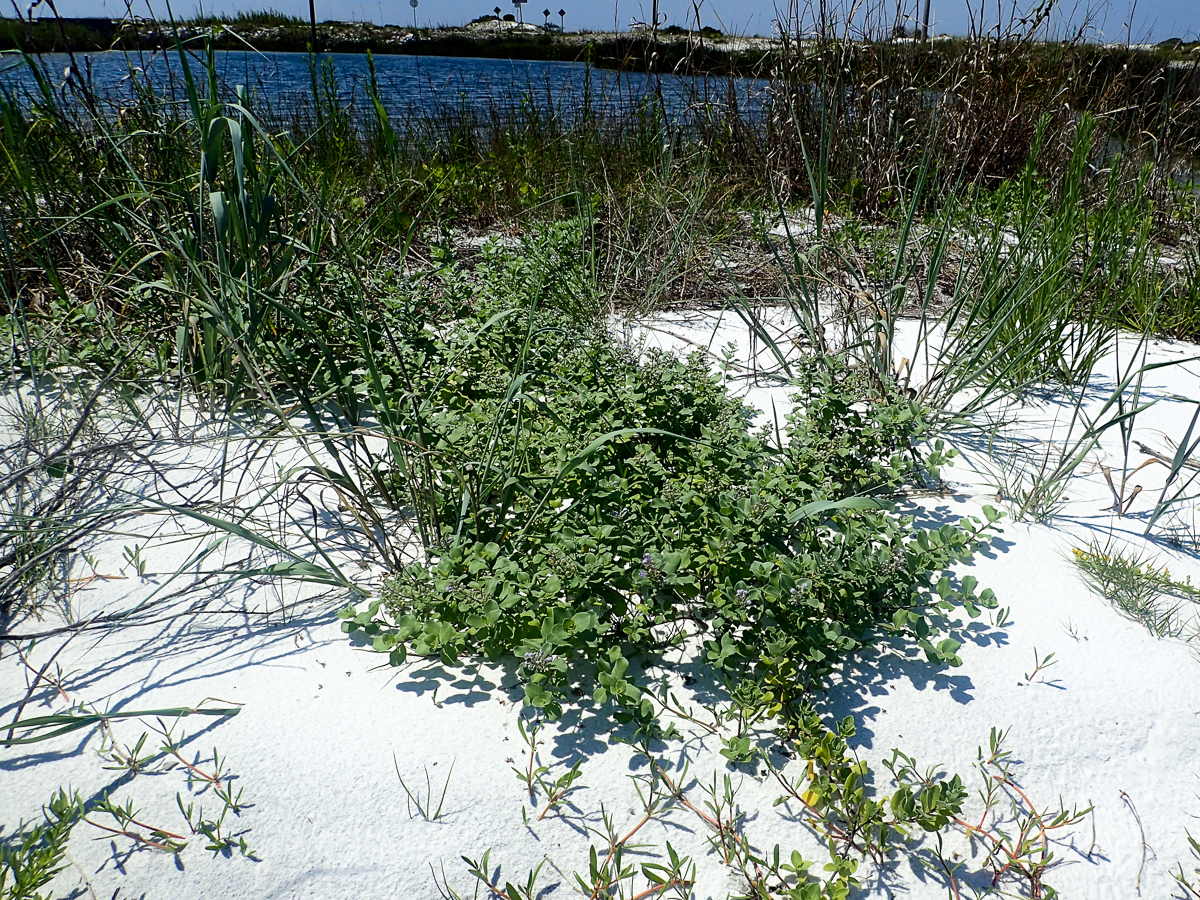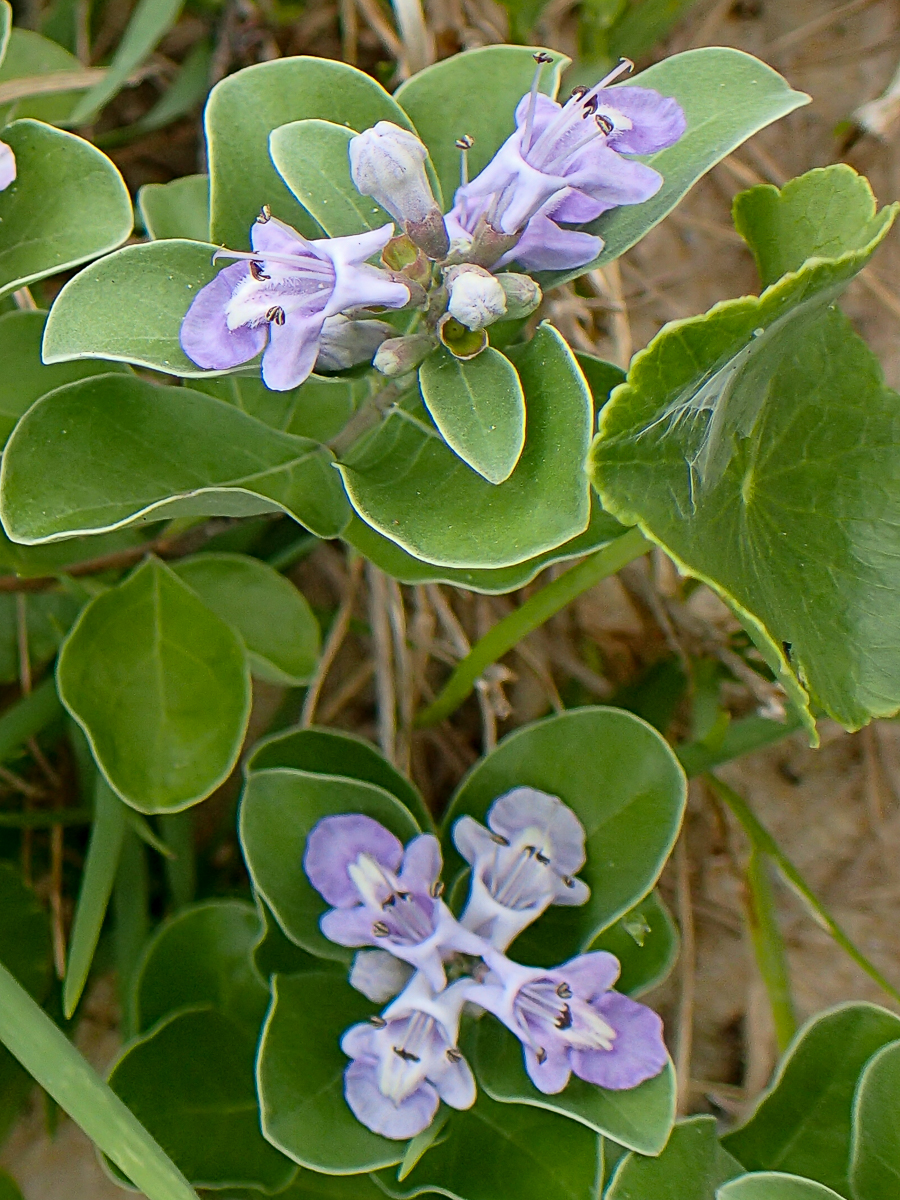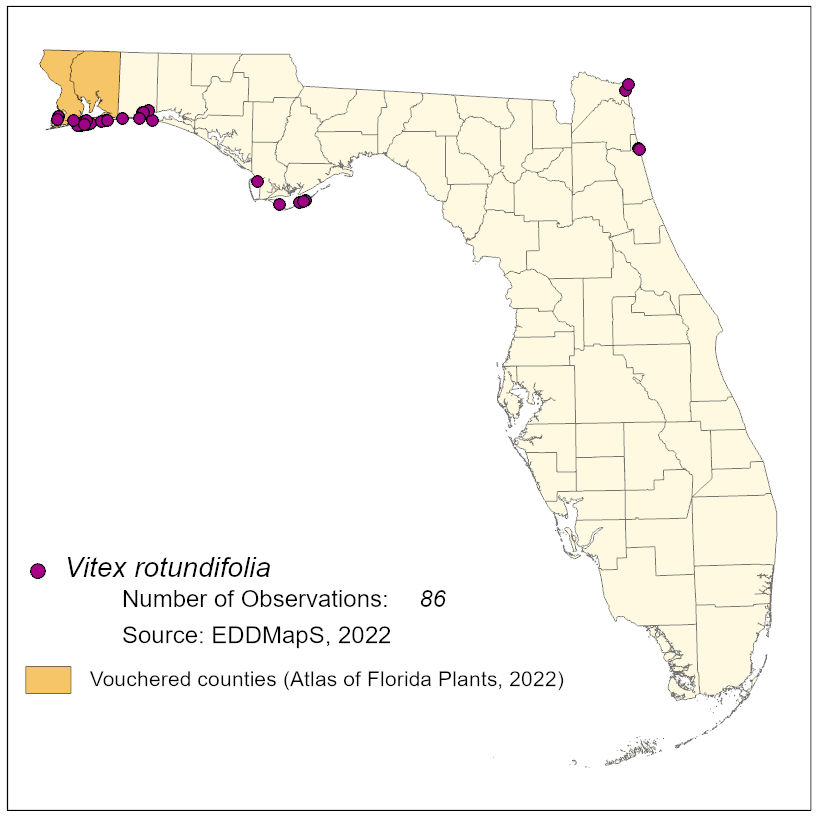Common Name: beach vitex
Family: Verbenaceae
Common Synonyms: none
USDA Hardiness Zone: 7 to 10
Growth Habit: Shrub
Origin: Japan, eastern Asia, Southeast Asia, India, Pacific islands.
FISC Category: 1
FDACS Listed Noxious Weed: Yes
Introduction Date: 1980s in North Carolina
IFAS Assessment:


Woody, deciduous shrub growing 30 to 60 cm tall, procumbent stems sprawling to 5 m or more, rooting at nodes, forming dense mats with age. Leaves suborbicular, opposite, 2 to 7 cm long, blue-green above and light greenish-white below, pubescent, with spicy aroma when crushed. Flowers blue-purple, to 2 cm long, in short terminal panicles to 8 cm long. Fruits green, turning blue-black at maturity, to 6 mm in diameter.
Beach dune
Can colonize beach foredunes, established in North and South Carolina.

Note: Clippings should be placed in plastic trash bags and sent to a landfill. They should not be used for mulch, as seeds and broken shoots left behind will wash to new beaches during storms and take root.
Clemson University Cooperative Extension. 2013. Home and Garden Information Center. http://www.clemson.edu/extension/hgic/pests/weeds/hgic2315.html. Accessed on December 6, 2013.
Public Works Magazine. 2013. http:/www.vegetationmanagement.pwmag.com/bestpractices/coastal_exotic_vine_diminishes_dunes.html. Accessed on December 6, 2013.
University of Georgia - Center for Invasive Species and Ecosystem Health. 2013. Invasive Plant Atlas of the United States: beach vitex (Vitex rotundifolia L.). http://www.invasiveplantatlas.org/subject.html?sub=11609. Accessed on December 6, 2013.